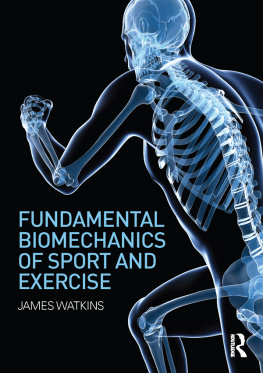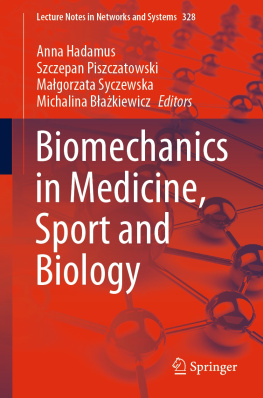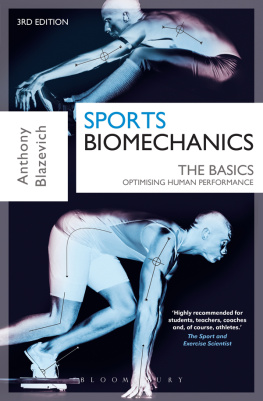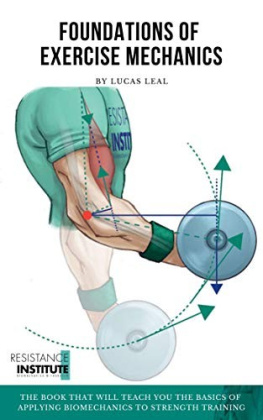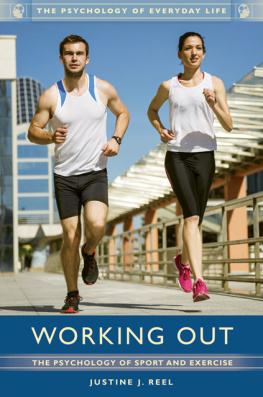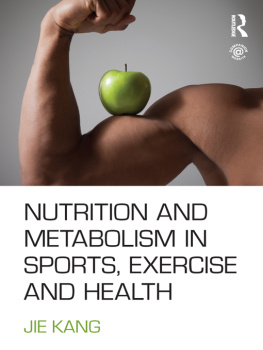Fundamental Biomechanics of
Sport and Exercise
Fundamental Biomechanics of Sport and Exercise is an engaging and comprehensive introductory textbook that explains biomechanical concepts from first principles, showing clearly how the science relates to real sport and exercise situations.
The book is divided into two parts. The first provides a clear and detailed introduction to the structure and function of the human musculoskeletal system and its structural adaptations, essential for a thorough understanding of human movement. The second part focuses on the biomechanics of movement, describing the forces that act on the human body and the effects of those forces on the movement of the body.
Every chapter includes numerous applied examples from sport and exercise, helping the student to understand how mechanical concepts describe both simple and complex movements, from running and jumping to pole-vaulting or kicking a football. In addition, innovative worksheets for field and laboratory work are included that contain clear objectives, a description of method, data recording sheets, plus a set of exemplary data and worked analyses. Alongside these useful features are definitions of key terms plus review questions to aid student learning, with detailed solutions provided for all numerical questions.
No other textbook offers such a clear, easy-to-understand introduction to the fundamentals of biomechanics. This is an essential textbook for any biomechanics course taken as part of a degree programme in sport and exercise science, kinesiology, physical therapy, sports coaching or athletic training.
James Watkins is a professor of biomechanics in the College of Engineering at Swansea University, UK. His main teaching and research specialisms are musculoskeletal anatomy and biomechanics.
Fundamental
Biomechanics of
Sport and Exercise
James Watkins
First published 2014
by Routledge
2 Park Square, Milton Park, Abingdon, Oxon OX14 4RN
Simultaneously published in the USA and Canada
by Routledge
711 Third Avenue, NewYork, NY 10017
Routledge is an imprint of the Taylor & Francis Group, an Informa business
2014 James Watkins
The right of James Watkins to be identified as author of this work has been asserted by him in accordance with Sections 77 and 78 of the Copyright, Designs and Patents Act 1988.
All rights reserved. No part of this book may be reprinted or reproduced or utilised in any form or by any electronic, mechanical or other means, now known or hereafter invented, including photocopying and recording, or in any information storage or retrieval system, without permission in writing from the publishers.
Trademark notice: Product or corporate names may be trademarks or registered trademarks, and are used only for identification and explanation without intent to infringe.
British Library Cataloguing in Publication Data
A catalogue record for this book is available from the British Library
Library of Congress Cataloging in Publication Data
[CIP data]
ISBN: 978-0-415-81507-9 (hbk)
ISBN: 978-0-415-81508-6 (pbk)
ISBN: 978-0-203-06646-1 (ebk)
Typeset in Perpetua and Bell Gothic by
Servis Filmsetting Ltd, Stockport, Cheshire
To Shelagh
Contents
PART I
Functional anatomy of the musculoskeletal system
PART II
Biomechanics of movement
In this worksheet the students collect distancetime data for a 15m sprint and use the data to plot the corresponding distancetime, speedtime and accelerationtime graphs.
In this worksheet the students collect stride rate, stride length and relative stride length data for running on a treadmill over a speed range of 2.04.5m/s and use the data to plot the corresponding stride lengthspeed, stride ratespeed, and relative stride lengthspeed graphs.
In this worksheet the students record the anteroposterior and vertical components of the ground reaction force for a student walking across a force platform and carry out forcetime analyses of the two components.
In this worksheet the students record the anteroposterior and vertical components of the ground reaction force for a student running across a force platform and carry out forcetime analyses of the two components.
In this worksheet the students determine the position of the whole body centre of gravity by the direct method and examine the effect of changes in body position on the location of the whole body centre of gravity.
In this worksheet the students compare the direct and segmental methods of determining the position of the whole body centre of gravity.
In this worksheet the students record a video of a standing long jump and analyse the video to determine take-off distance, flight distance and landing distance.
In this worksheet the students determine the moment of inertia of the human body about a vertical axis.
In this worksheet the students determine and compare the average power output of the human body in climbing stairs and running up a slope.
In this worksheet the students determine peak power output and average power output in a countermovement jump.
A book resting on a table has two forces acting on it; the weight of the book and the force exerted by the table. The two forces are equal in magnitude and opposite in direction so that the net force or resultant force acting on the book is zero. The book will remain at rest as long as the resultant force acting on it is zero. To lift the book from the table, it is necessary to create a resultant upward force on it by applying an upward force to it that is greater than its weight. Similarly, to lower the book down to the table, it is necessary to create a resultant downward force on it by applying an upward force to it that is less than its weight. It is clear from these examples that the movement of the book is completely determined by the resultant force acting on it. The examples illustrate the fundamental mechanical principle that the movement of any object or living organism (or part of a living organism, such as an arm or leg) is completely determined by the resultant force acting on it and that any change in the way that an object or living organism moves, i.e. any change in its speed or direction of movement, is the direct result of a change in the resultant force acting on it. There are three fundamental types of force: compression, tension and shear. The three types of force occur separately as, for example, when pressing a key on a keyboard (compression force exerted on the key), pulling on a rope (tension force exerted on the rope), and cutting a piece of paper with scissors (shear force exerted on the paper). The three types of force also occur in combination in bending and twisting.
Human movement is brought about by the musculoskeletal system under the control of the nervous system. The skeletal muscles pull on the bones to control the movements of the joints and, in doing so, control the movement of the body as a whole. By coordination of the various muscle groups, the forces generated by our muscles are transmitted by our bones and joints to enable us to apply forces to the external environment, usually by our hands and feet, so that we can adopt upright postures (counteract the constant tendency of body weight to collapse the body), transport the body and manipulate objects, often simultaneously. Consequently, the capacity of the body to move and carry out all of the activities that constitute daily living depends upon the capacity of the musculoskeletal system to generate and transmit forces. The forces generated and transmitted by the musculoskeletal system are referred to as internal forces. Body weight and the forces that we apply to the external environment are referred to as external forces. At any point in time we cannot change body weight and, as such, body weight is a passive external force. The external forces that are actively generated are active external forces. The magnitude, duration and timing of the active external forces are determined by the magnitude, duration and timing of the internal forces. Biomechanics is the study of the forces that act on and within living organisms and the effect of the forces on the size, shape, structure and movement of the organisms. The musculoskeletal components (skeletal muscles, bones, joints) normally continuously adapt their size, shape and structure to more readily withstand the time-averaged internal forces exerted on them in everyday physical activity. For example, skeletal muscles normally adapt to sustained strength training by changes in size, shape and structure that enable the muscles to produce more force, i.e. the muscles become stronger. Similarly, skeletal muscles adapt to a prolonged period of relative inactivity by changes in size, shape and structure that result in the muscles becoming weaker. The adaptation of musculoskeletal components to the time-averaged internal forces exerted on them is called structural adaptation. Structural adaptation is the branch of biomechanics concerned with the effect of internal forces on the size, shape and structure of the components of the musculoskeletal system.

